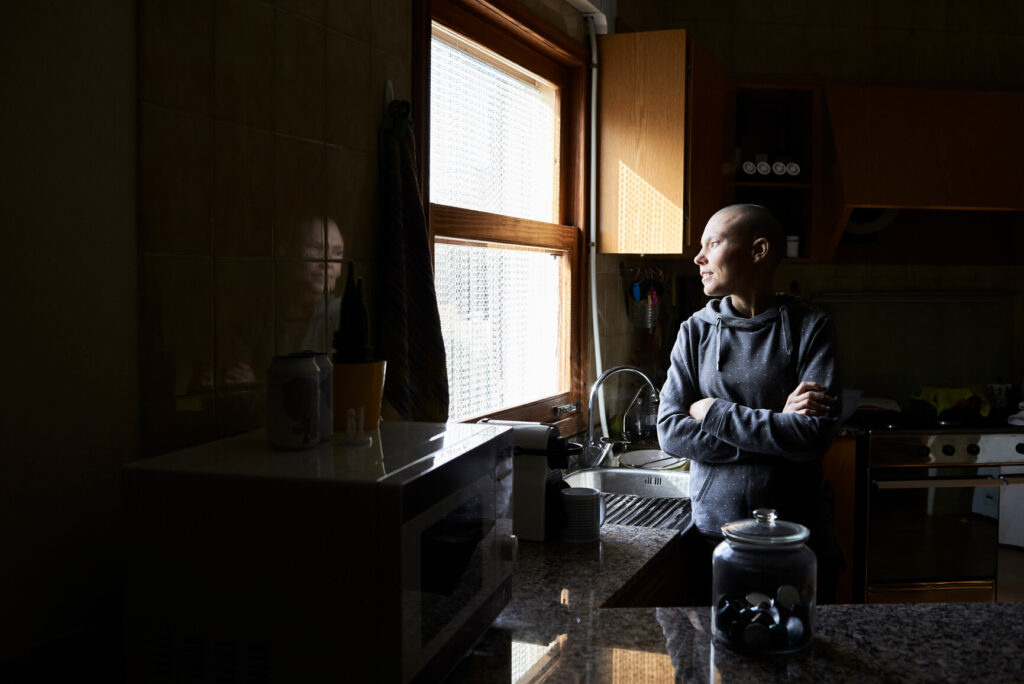News & Articles
When Apples and Oranges Become Peas and Carrots — Two Very Different Kinds of Cancer Genetic Tests
Jewels Knows Genetics
We’re excited to launch a monthly column featuring genetic counselors from external institutions and Color. Each month, genetic counselors will share insights on how genetics can empower people to make more informed health decisions. We kick it off with Julie S. Mak, a genetic counselor and supervisor at the University of California, San Francisco Comprehensive Cancer Center.
It’s an understatement to say there are a lot of genetic tests out there — more every day — and it can be dizzying to make sense of them. If you or someone close to you has cancer, the range of genetic tests you may encounter only gets bigger. While the genetic counselor in me wants to talk about all the differences and nuances of these tests, the focus here is on two broad categories of tests in the area of cancer genetics — germline tests and tumor tests.
What is a “germline” genetic test?
The more established and familiar type of cancer genetic test, the main goal of a germline or “inherited” genetic test is to find out if someone was born with an increased susceptibility to cancer that was passed down from their mother or father’s family. An example of this type of test is a BRCA1 and BRCA2 genetic test to find out if someone has an increased risk of breast, ovarian, and other cancers. A germline test is done on normal healthy cells — usually from blood or saliva. It does not tell someone whether they have cancer or not, but it can find people who have a higher-than-average risk. This information can be used to help people do extra monitoring to catch cancer early or even prevent it completely. The results of a germline genetic test can affect family members, who may also have inherited the same genetic risk.
What is a “tumor” test?
This type of genetic test is only used in people who have cancer and can help find the best treatment plan for complex cancers. By definition, tumor or cancer cells have many genetic changes that are not present in the rest of the body — these genetic changes are what allowed the cancer to grow. Because cancer is actually a very diverse disease, this type of testing can more accurately characterize a cancer and allow doctors to choose the most effective and targeted treatments. Testing to look for the genetic characteristics that are specific to cancer cells has expanded a great deal in the past few years. An oncologist is the best person to advise whether tumor testing will be helpful for an individual patient, and which test is most appropriate. Some examples of this kind of testing are Foundation One and Mammoprint tests. Tumor testing is usually done on a sample from a cancer biopsy or surgery. In some cases, it is done on a blood sample, looking for tiny amounts of genetic material from the tumor that can be found in the blood. These cancer-specific genetic changes are sometimes called “somatic;” they not inherited and cannot be passed on to other people in the family.
So can a germline test tell us what is making a cancer grow?
Sometimes. Germline genetic tests are designed to find genetic risk factors that some people are born with which make them more susceptible to developing cancer. These “weak points” in a person’s genetics can create an opening for additional genetic changes that eventually lead to a cancer. So, if we can find those weak points, we can hypothesize — but not prove — the path that a cancer took to grow, and by extension, what treatments might be most effective.
And can a tumor test tell us if cancer is inherited?
Sometimes. Cancer cells developed from healthy cells, acquiring additional genetic changes to make them grow more quickly and invasively. So, when you do genetic testing on a sample from a cancer, you see both the germline and the cancer-specific genetic changes superimposed on each other. Based on the type of genetic changes and other information about that person’s cancer history and family history, we can hypothesize — but not prove — which genetic changes were inherited and which are only in the cancer cells.
I mentioned that tumor tests are also sometimes done on blood samples, and the interpretation of these tests is complex in a different way — they should theoretically be able to distinguish between what is inherited and what is only in the cancer cells, but each laboratory reports the information differently, so this isn’t always possible. In addition, there are significant technical challenges in testing either cancer cells or tumor DNA in blood, and the accuracy of tumor testing — while impressive — generally falls below that of germline testing.
We go together like peas and carrots
You have probably figured out by now that all this means we get the most detailed and complete picture when we have both germline and tumor genetic data. By comparing the results from both kinds of tests, we can generate more accurate information both for optimizing a patient’s treatment and for a family.
As a genetic counselor, the rapid growth in both germline and tumor testing is simultaneously daunting and exciting. We are constantly researching to learn about the newest tests, the potential and limitations of each technology, and how to communicate this to our colleagues and patients. Ultimately, these scientific developments have been rewarding — they have led to a new level of collaboration between oncologists, laboratories, genetic counselors, and patients, as we all work together to make use of the latest technologies to help families facing the challenge of cancer.
Julie S. Mak is a genetic counselor and supervisor at the University of California, San Francisco Comprehensive Cancer Center, where she has worked since 2002. Her current focus is in the Hereditary Cancer Clinic, an interdisciplinary service that provides coordinated medical care and research opportunities for people who have a positive genetic test result associated with an increased risk of cancer.



